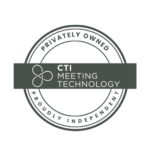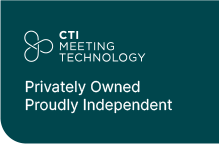After months of work, a carefully curated program, and relevant speakers, every event planner dreams of full session rooms and a vibrant atmosphere – but the reality can sometimes feel like a silent auction hall if attendance doesn’t meet expectations. You pour your heart and soul into crafting the perfect event, yet the crucial element – a thriving audience – can feel elusive. The good news is, you’re not alone; this situation can be familiar to many meeting planners.
However, high event attendance is not only about the numbers. It directly impacts your return on investment, amplifies networking opportunities, and ultimately determines whether you achieve your event’s goals.
Today, with thousands of stimuli everywhere, simply announcing an event and hoping people attend is no longer a viable plan. That is why we have compiled this ultimate guide, packed with over 15 actionable strategies designed to help you attract the right attendees who will contribute to a dynamic and impactful event.
Whether you’re a seasoned event professional or just starting out, these insights will equip you with the tools and knowledge to significantly increase event attendance and transform your events from well-planned gatherings into resounding successes. So, let’s dive in and explore the proven tactics to boost event attendance and make your next event your best one yet!
Pre-Event Strategies: Laying the Foundation for Success
1. Define Your Ideal Attendee
Before promoting your meeting, take a step back and paint a detailed picture of your ideal attendee. Who are they? What are their professional goals, their pain points, their interests? Understanding your target audience inside and out is crucial to tweaking your message.
This detailed understanding will inform every aspect of your event marketing strategy, from which channels you use to the language you employ. Generic messaging rarely resonates. Instead, craft compelling narratives that directly address the needs and aspirations of specific attendee segments. By speaking directly to their challenges and offering solutions through your event, you’re more likely to gain a new attendee. Create detailed attendee profiles to guide your content and outreach.
2. Craft a Compelling Event Value Proposition
Why should someone invest their time and money in attending your event? Your value proposition is the clear and concise answer to this key question. It highlights the unique benefits and tangible takeaways that attendees can expect. Go beyond simply listing features and focus on the outcomes.
Will they gain invaluable industry knowledge? Forge crucial networking connections? Discover innovative solutions to their challenges? Articulate these event benefits with clarity and conviction in all your event promotion materials. Emphasize those selling points that make your event stand out from the competition. A strong value proposition acts as a magnet, attracting attendees who see genuine value in what you offer.
3. Optimize your Website and Landing Pages
Your event website and dedicated registration landing pages are often the first (and sometimes the only) interaction potential attendees have with your event. So make sure they make a great first impression, showing professionalism and ease. Your website should be user-friendly, easy to navigate, and mobile-responsive.
Key information, such as the agenda, speaker bios, venue details, and pricing, should be readily accessible from multiple devices. Most of your attendees will carry their smartphones during the meeting, and offering a mobile app will ease the communication of last-minute plans and access to event content.
4. Embrace a Multi-Channel Marketing Approach
Relying on a single marketing channel is like fishing with only one line in the water. To maximize your reach and increase event attendance, adopt a multi-channel marketing strategy. This involves strategically utilizing a mix of platforms to connect with your target audience where they spend their time.
Email marketing remains a powerful tool for direct communication and nurturing leads. Social media marketing allows for broader reach, engagement, and community building. Content marketing – through valuable blog posts, insightful articles, engaging videos (consider hosting webinars or speaker previews on YouTube), and even podcasts – establishes your authority and attracts organic traffic from individuals actively seeking solutions your event offers. Don’t overlook the power of paid advertising on relevant platforms (LinkedIn Ads for B2B, Facebook/Instagram Ads for broader audiences) to precisely target specific demographics and interests.
Finally, explore strategic partnerships with other organizations or industry influencers to tap into their established networks and reach fresh pools of potential attendees. Consistency in branding and messaging across all channels is crucial for building brand recognition and trust.
5. Incentivize Early Commitment & Offer Tiered Pricing
Human psychology plays a significant role in decision-making. Early-bird discounts leverage the fear of missing out (FOMO) and reward those who commit early, creating a sense of urgency and driving initial registrations. Implement clear deadlines for these discounted rates to maximize their effectiveness.
Beyond early-bird offers, consider tiered pricing structures that cater to different budgets and levels of access. For example, you might offer a basic pass, a student pass with exclusive benefits, or group discounts. This allows potential attendees to choose an option that best suits their needs and perceived value, broadening your appeal and ultimately helping you boost event attendance. Clearly articulate the specific benefits of each tier to justify the price difference and help attendees make informed decisions.
6. Leverage Testimonials
People often look to their peers and trusted sources for validation. Social proof, such as testimonials from past attendees, case studies, and social media endorsements, can significantly influence potential registrants. Display positive feedback on your website and in your event promotion materials.
You can also encourage attendees to share their experiences on social media using a dedicated event hashtag. Consider partnering with industry leaders to lend credibility to your event; seeing that others have had positive experiences and found value in your event builds trust and encourages new registrations.
7. Make Registration a Breeze
Most importantly, your event registration process needs to be seamless and intuitive. Clear call-to-action buttons, visible registration links, and a straightforward form are essential. For specific marketing campaigns, create dedicated landing pages that directly correlate with the messaging of your ads or emails. These pages should reinforce the value proposition and make it incredibly easy for interested individuals to sign up.
Consider using event management software with a user-friendly registration interface and automated communication features. The goal is to minimize friction and make it simple for interested individuals to convert into registered attendees. A positive and efficient registration experience sets a positive tone for the rest of the event journey.
8. Build Excitement with Engaging Pre-Event Content
Keep your potential attendees engaged and build excitement in the months leading up to your event through compelling pre-event engagement strategies. Share sneak peeks of session content, interview speakers, offer behind-the-scenes glimpses of the event planning process, or highlight networking opportunities.
Utilize content marketing through blog posts, videos, and social media updates to provide value and build anticipation. Run contests or polls to encourage interaction and create a sense of community even before the event begins. Consistent and engaging communication keeps your event top-of-mind and motivates people to register.
During-Event Strategies: Enhancing the Attendee Experience
9. Foster Networking Opportunities and Community Building
For many attendees, connecting with peers and industry leaders is one of the main reasons for attending events. Facilitate networking opportunities and cultivate a sense of community building. Design dedicated networking sessions with structured activities like icebreakers or speed networking.
Take advantage of your event app and utilize the features that allow attendees to connect with each other and participate in discussions. Another idea is creating online communities or social media groups where attendees can interact before, during, and after the event on your social media channels. By fostering meaningful connections, you enhance the overall attendee experience and make your event a valuable platform for professional growth.
10. Deliver Exceptional Content and Engaging Sessions
The quality and delivery of your event content are essential to guarantee attendee satisfaction and future attendance. Ensure your program features a diverse range of sessions that are not only informative but also genuinely engaging. Offer a variety of formats, including keynote speeches, interactive workshops, panel discussions, and Q&A sessions, while selecting dynamic and knowledgeable speakers who can captivate the audience during their sessions.
The advantage of event software is that even those who can’t attend in person can still participate in the conversation remotely. Pay attention to the flow and pacing of your program to maintain attendee interest. High-quality event content and engaging sessions are the cornerstones of a truly valuable and memorable experience.
11. Create Memorable and Immersive Experiences
Go beyond simply delivering information; strive to create an enthralling experience that resonates with your attendees on multiple levels. Think beyond the standard presentations and brainstorm opportunities to incorporate the interactive elements we mentioned earlier. Your attendees will remember how your event made them feel, so pay close attention to the sensory details—the ambiance, the music, even the food and beverage offerings can contribute to the overall event atmosphere. By creating memorable moments and opportunities for active participation, you enhance attendee engagement and make your event stand out from the crowd.
12. Provide Onsite Support and Logistics
The smooth execution on the day of your event is crucial for a positive attendee experience and, consequently, for encouraging future attendance and positive word-of-mouth. Make sure there’s clear and visible signage guiding attendees, and that well-informed staff are readily available (physically and virtually via a help desk or event app) to answer questions and provide assistance promptly.
Pay meticulous attention to logistical details such as comfortable seating arrangements, fully functioning AV equipment, and easily accessible amenities like restrooms, water stations, and designated quiet or relaxation areas. Resolving attendee needs with a welcoming attitude demonstrates care and professionalism, making or breaking overall satisfaction and a seamless event experience.
Post-Event Strategies: Nurturing Relationships and Future Attendance
13. Facilitate Post-Event Engagement and Feedback Collection
The event might be over, but your engagement with attendees shouldn’t end there. Implement strategies for post-event engagement to keep the momentum going. Share recordings of sessions, key takeaways, and relevant resources with attendees. Offering on-demand content allows remote attendees to join and learn at their own pace, plus in-person attendees can also revisit the key content as many times as they need.
Consider creating dedicated online communities or forums (perhaps a private LinkedIn group) where attendees can continue discussions, share insights, and network. Actively seek feedback as well through post-event surveys. Ask specific questions about what attendees enjoyed, what could be improved, and their likelihood of attending future events. This valuable feedback provides insights for future planning and demonstrates that you value their opinions. Staying connected and actively listening fosters loyalty and increases the likelihood of future attendance.
14. Build Relationships for Future Events
Past attendees and engaged leads are your most valuable asset for future events. Once you gather the meeting feedback, leverage the data collected to nurture leads and build long-term relationships. Segment your audience based on their interests and engagement levels. Send personalized follow-up emails with relevant content and early-bird offers for future events.
If you have the budget, consider implementing a loyalty program that rewards repeat attendees. Consistently providing value and fostering a sense of belonging will increase attendee retention and build a strong foundation for future event success. Remember, building relationships is a marathon, not a sprint.
15. Analyze, Adapt, and Elevate
Data is your best friend when it comes to planning successful events. Track key event metrics such as registration numbers, attendance rates, session engagement, social media activity, and feedback survey results. The good news is that a reliable event software like cOASIS provides detailed custom reports to get all the event data you need in under a few minutes. Analyze this event data to identify what worked well and what could be improved for future events.
You should use these insights to refine your marketing strategies, program agenda, and overall attendee experience. Embrace a continuous improvement mindset and be willing to adapt based on the data you collect. Implementing this approach after every meeting will lead to consistently better events and higher attendance.
Wrapping Up…
Increasing event attendance is an ongoing process that requires a strategic and multifaceted approach, so don’t fret! But by implementing these 15 strategies, from learning everything about your audience to nurturing post-event relationships, you can lay a solid foundation for success. Remember that a holistic approach, combining effective pre-event marketing with engaging during-event experiences and thoughtful post-event follow-up, is the most powerful way to fill seats and create a thriving and impactful event.
Embrace these tactics, adapt them to your unique needs, and watch your event attendance soar. Your next successful event is within reach! And if you’re looking for a software partner to support your journey, explore CTI’s solutions today.





